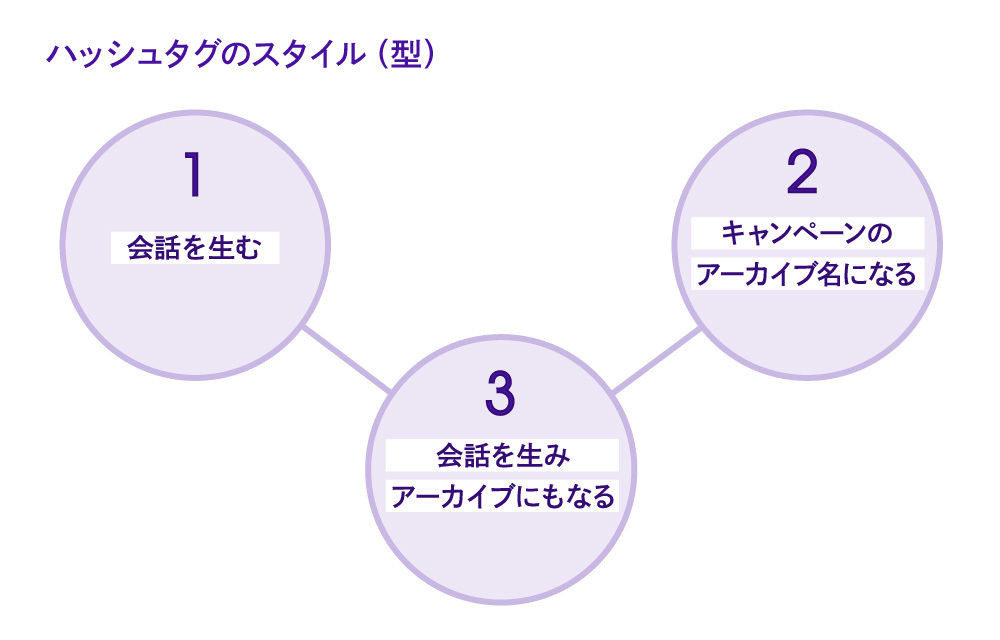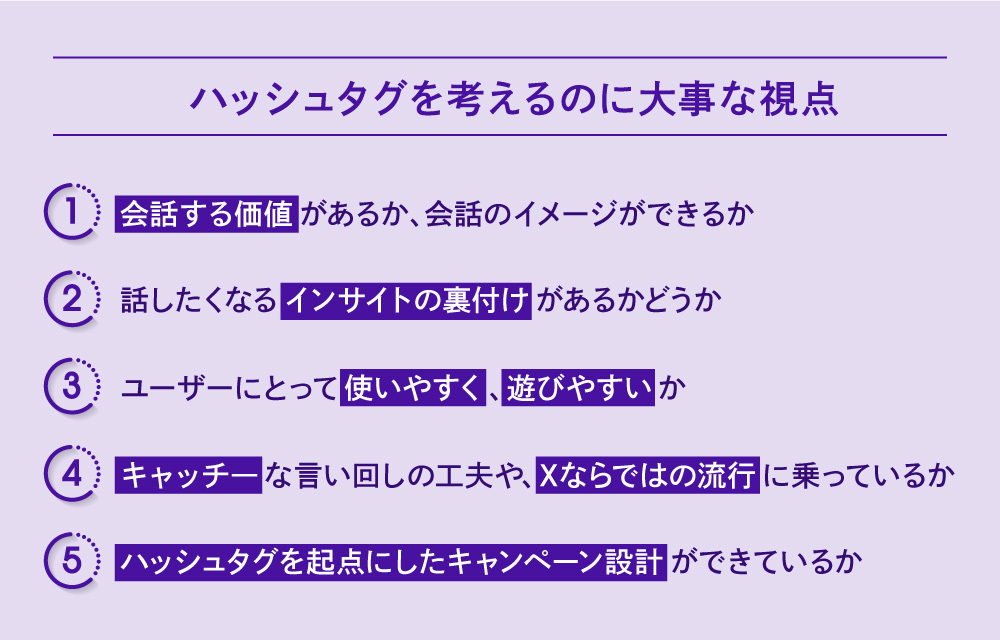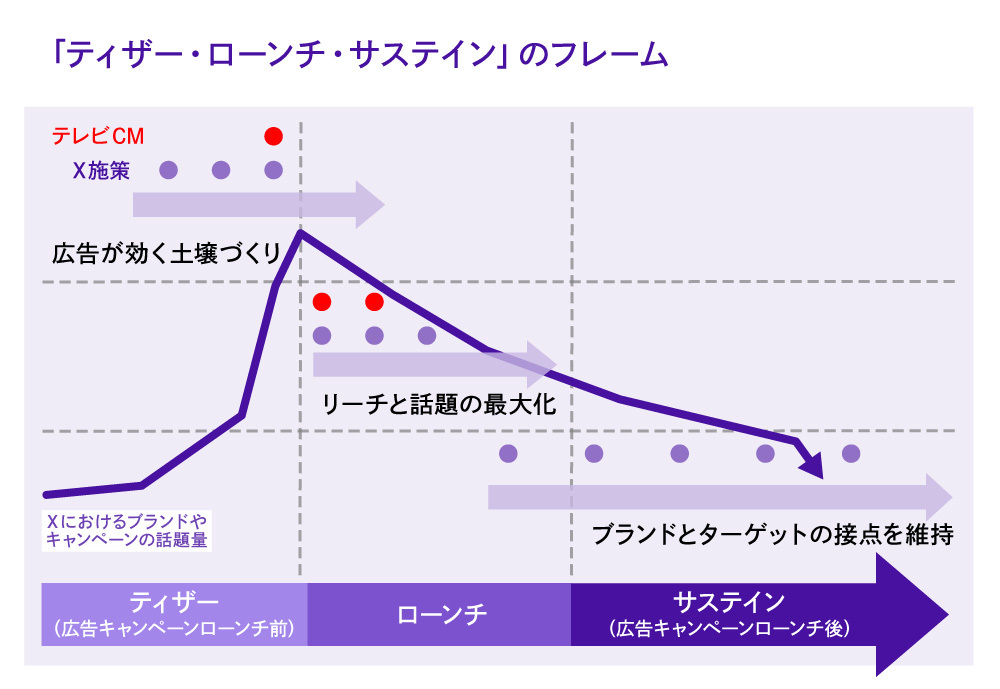X has become indispensable for brand marketing and advertising campaigns.
Even after rebranding from Twitter to "X" in July 2023, its user base in Japan continues to grow, surpassing 40 million mDAU (※1) and 67 million mMAU (※2). Alongside user numbers, usage time has also increased. The average daily time spent per user now reaches 43 minutes (※3).
X is used not only by younger demographics but also by a significant middle-aged demographic. Users gather seeking "real-time" information, and the "candid conversations" that unfold there, along with their "viral potential," represent its greatest strength and appeal since the Twitter era. This means it holds the potential to instantly spread advertising campaigns across a broad demographic. Furthermore, precisely because it's an SNS where candid opinions are shared, X is also a treasure trove of user insights.
X's creative strategy group "Next" and Dentsu Inc. have teamed up to research ideas and frameworks for advertising campaigns that generate buzz on X. Analyzing 100 particularly impactful cases from the last two years and synthesizing trends revealed that advertising campaigns originating on X and spreading globally excel in "four key perspectives."
Our research team unraveled these "four perspectives" and developed the "4X" steps for CX planning starting with X, launching it in 2024.
This series will clearly explain each step of "4X" using case studies. The first installment provides an overview of "4X".
※1 mDAU (Monetizable Daily Active Usage): Daily active users contributing to advertising revenue
※2 mMAU (Monetizable Monthly Active Usage): Active users per month contributing to advertising revenue
※3 As of March 2024 (Company X survey)
1. [eXplore] Discover Target Insights
Successful campaigns utilizing X often excel at "discovering target insights (= explore)," making "eXplore" an indispensable element.
X, where genuine conversations unfold, is a treasure trove of user insights. For planners, conducting ego searches of user posts on X or performing zero-level analysis has become indispensable when planning ad campaigns and strategies. At Next, we support insight discovery using the following framework:
"What does the brand want to communicate?"
"What questions does the audience (target) have in their daily lives?"
"What habitual actions do they find themselves doing?"
"What are they talking about regarding the brand on a daily basis?"
"When are they having conversations?"
We explore user insights by delving into the brand, audience (target), and moments respectively, visualizing where the three circles in the diagram above overlap.
We then define the point where the three circles overlap most as the "ignition point for conversation" with the brand and begin planning and developing advertising campaigns for X. This step is the most crucial within the "4X" framework and is fundamental to all CX planning.
2. 【eXecute】 Designing the Execution
Successful advertising campaigns are often consistently designed from X through to execution. This means the conversation about the brand or campaign on X, from initial mention to amplification, is thoroughly planned.
In this step, developing hashtags with the campaign's overall vision in mind is crucial.
Note that the purpose of a catchphrase differs from that of a hashtag. While a catchphrase is "for conveying what you want to say," a hashtag is "for sparking conversation." While traditional hashtags primarily served an "archiving" function, they are now increasingly shifting toward being "tools for generating conversation."
Analyzing campaigns that trended on X reveals hashtags can be broadly categorized into the three types shown below.
We develop hashtags with clear objectives and roles, using them as the starting point to design the entire campaign's communication strategy. When developing hashtags, it's crucial to adopt the target audience's perspective and consider the following five viewpoints:
3. [eXpand] Expand the customer experience
In this step, we design the timeline of the advertising campaign to consider how to further expand the customer experience.
Many successful campaigns are designed using the "Teaser-Launch-Sustain" framework, often incorporating X Ads, to accelerate the customer journey.
Divide the campaign period into three phases starting from the launch date: "Teaser," "Launch," and "Sustain."
During the Teaser phase, implement measures to generate initial interest among the target audience, thoroughly preparing the groundwork for effective advertising. This significantly increases the campaign's success probability. For example, one campaign featuring a celebrity for pre-launch promotion saw consumers exposed to the promotion show a 16% higher favorability rating and 21% higher purchase intent compared to those not exposed (X Research).
At the launch timing, alongside TV commercials, we implement "X Takeover (Reservation-Based) Ads," which can be purchased on a daily basis and instantly boost reach, aiming to maximize both reach and buzz.
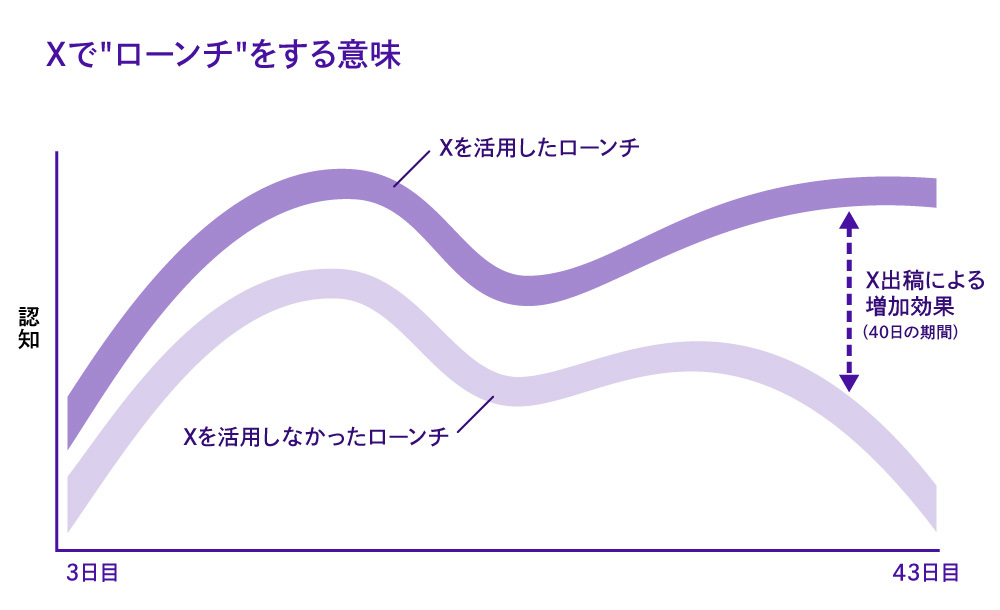
Source: Nielsen Brand Effect Studies for 35 launch campaigns (September 2015–August 2017), total survey participants: ~59,000
Then, during the sustain phase (after the ad campaign launch), we continue the campaign using tools like "X's performance-based ads," which allow flexible design of the campaign duration and operational content to match the campaign, maintaining touchpoints between the brand and its target audience.
This approach—designing advertising campaigns across three distinct phases and creating touchpoints with the target audience tailored to each phase's objectives—is key to maximizing the customer experience.
4. [X (cross) media] Utilizing media beyond X to deliver enhanced customer experiences
While combining X with TV commercials yields brand lift effects, pairing X with OOH also promises synergistic benefits.
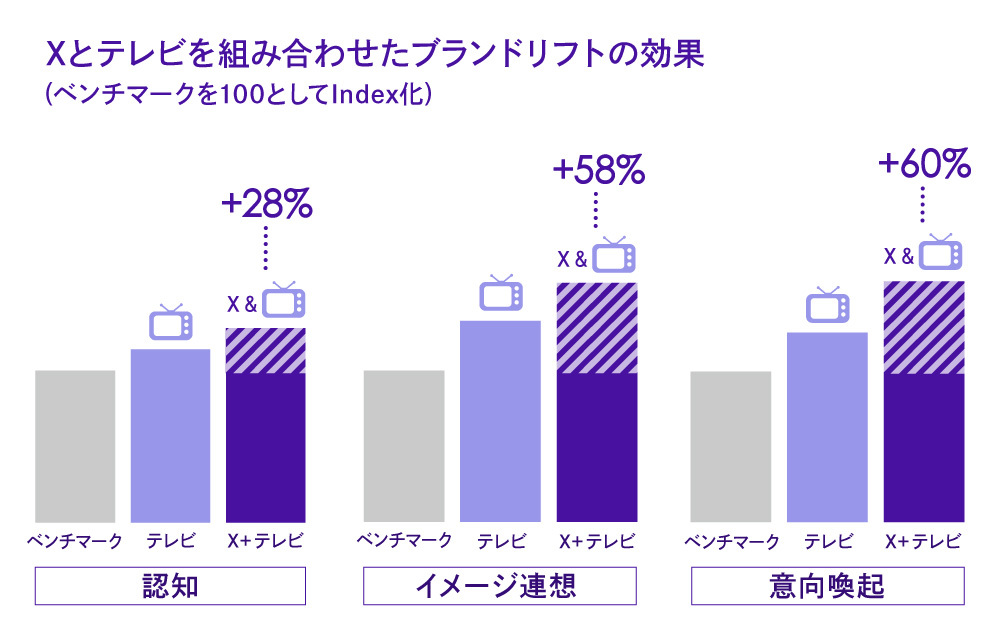
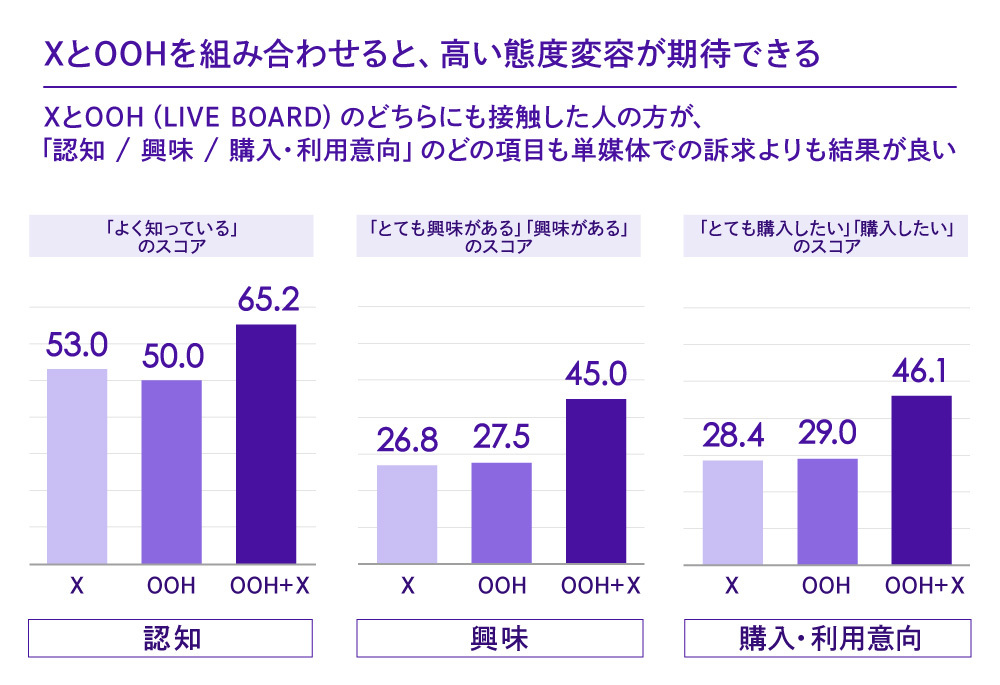
Analysis results represent the average of the most recent 10 cases where X and LIVE BOARD were implemented simultaneously (exposure to other media not considered).
Campaigns that become widely discussed in society are consciously creating touchpoints with their target audience in the real world, not confined to the X universe, while leveraging a cross-media perspective. This approach generates a deeper customer experience. Furthermore, we believe that by utilizing influencer and fan voices, it is possible to deliver an even more cross-media integrated customer experience.
This time, we introduced the overview of "4X". Next time, we will introduce "eXplore", showing how creators and planners utilize X daily to aid in planning and development, using case studies.






